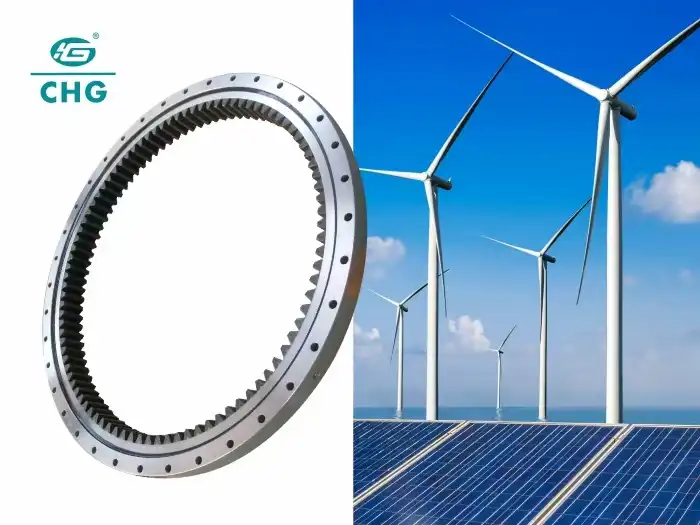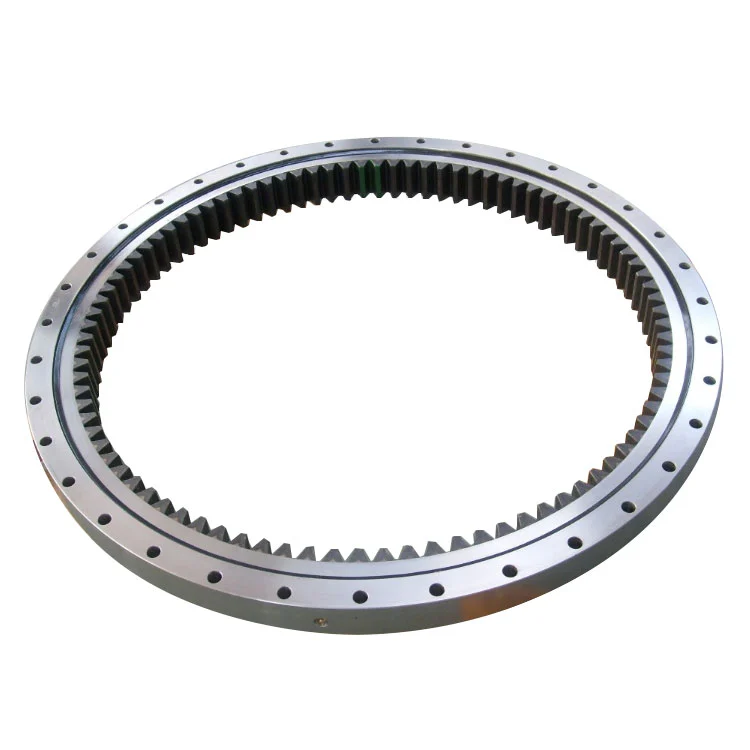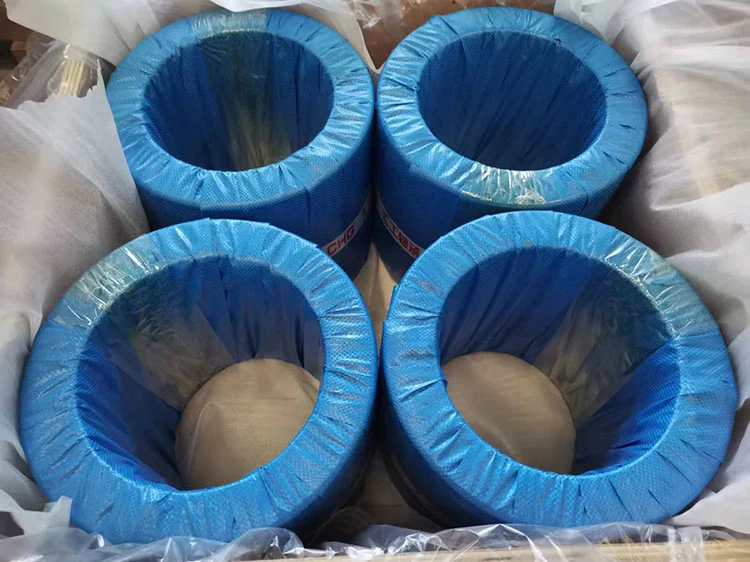How Is Load Distribution Managed in Wind Turbine Slewing Bearings?
Wind turbine slewing bearings play a crucial role in the efficient operation of wind energy systems, particularly in managing load distribution. These specialized bearings are designed to support the enormous weight of the nacelle and rotor assembly while allowing smooth rotation to align with changing wind directions. The management of load distribution in these bearings is a complex engineering challenge that involves careful consideration of various factors such as bearing geometry, material properties, and lubrication systems. Effective load distribution management is essential for maximizing the lifespan of the bearings, reducing maintenance requirements, and ensuring optimal energy production. This article delves into the intricacies of load distribution management in wind turbine slewing bearings, exploring the techniques and technologies employed to achieve balanced load distribution, minimize wear, and enhance overall turbine performance in the demanding environment of wind energy production.
What Are the Key Design Considerations for Wind Turbine Slewing Bearings?
How Does Bearing Geometry Affect Load Distribution?
The geometry of wind turbine slewing bearings is a critical factor in managing load distribution. These bearings are typically designed with a large diameter and a relatively thin cross-section to accommodate the substantial loads while minimizing weight. The raceway profile, ball or roller size, and contact angle are carefully engineered to distribute loads evenly across the bearing surface. For instance, four-point contact ball bearings are often used in wind turbine applications due to their ability to handle combined radial, axial, and moment loads. The specific arrangement of rolling elements within the bearing also plays a crucial role in load distribution. Some designs incorporate asymmetrical roller placement to better handle the uneven loads experienced in wind turbine operations. The Wind Turbine Slewing Bearing's geometry must be optimized to ensure that loads are distributed as uniformly as possible, reducing stress concentrations and extending the bearing's operational life.
What Materials Are Used in Wind Turbine Slewing Bearings and Why?
The choice of materials for Wind Turbine Slewing Bearings is crucial for their performance and durability. High-quality alloy steels are typically used for the rings and rolling elements due to their excellent strength, hardness, and fatigue resistance. These materials must withstand the harsh environmental conditions often encountered in wind turbine operations, including extreme temperatures, moisture, and salt spray in offshore installations. The raceways are usually hardened to increase wear resistance and load-bearing capacity. Some manufacturers use advanced surface treatments or coatings to further enhance the bearing's performance and corrosion resistance. The cage material, which separates the rolling elements, is often made of brass or high-performance polymers to reduce friction and wear. The selection of materials for Wind Turbine Slewing Bearings must balance factors such as load capacity, wear resistance, corrosion resistance, and cost-effectiveness to ensure optimal performance and longevity in the demanding wind energy environment.
How Do Sealing Systems Contribute to Load Distribution Management?
Sealing systems play a vital role in managing load distribution in Wind Turbine Slewing Bearings by maintaining proper lubrication and preventing contamination. Effective seals help ensure that the bearing operates in an optimal environment, which is crucial for even load distribution and minimizing wear. Multi-lip seals or labyrinth seals are commonly used to protect the bearing from environmental contaminants such as dust, water, and salt spray. These sealing systems also help retain lubricant within the bearing, ensuring that all rolling elements and raceways are adequately lubricated. Proper lubrication is essential for reducing friction and wear, which in turn helps maintain consistent load distribution across the bearing surface. Some advanced Wind Turbine Slewing Bearings incorporate integrated lubrication systems that automatically distribute lubricant to critical areas, further enhancing load distribution management. By maintaining a clean and well-lubricated operating environment, sealing systems contribute significantly to the bearing's ability to handle and distribute loads effectively, ultimately extending its service life and improving overall turbine performance.

How Do Manufacturing Processes Impact Load Distribution in Wind Turbine Slewing Bearings?
What Precision Manufacturing Techniques Are Used?
Precision manufacturing techniques are crucial in producing Wind Turbine Slewing Bearings that can effectively manage load distribution. These techniques ensure that the bearing components are manufactured to extremely tight tolerances, which is essential for uniform load distribution. Computer Numerical Control (CNC) machining is widely used to achieve the required precision in raceway profiles and rolling element geometries. Advanced grinding and honing processes are employed to create ultra-smooth surfaces on the raceways, reducing friction and improving load distribution. Heat treatment processes, such as induction hardening or case carburizing, are carefully controlled to achieve the desired material properties and hardness profiles. Some manufacturers use innovative techniques like precision forging to produce near-net-shape components, reducing the amount of machining required and potentially improving the grain structure of the material. Quality control measures, including 3D coordinate measuring machines and non-destructive testing methods, are employed throughout the manufacturing process to ensure that Wind Turbine Slewing Bearings meet the stringent requirements for dimensional accuracy and surface finish necessary for optimal load distribution.
How Does Assembly Affect Load Distribution?
The assembly process of Wind Turbine Slewing Bearings plays a critical role in ensuring proper load distribution during operation. Precision assembly techniques are employed to maintain the tight tolerances achieved during manufacturing. The bearing rings must be assembled with careful attention to alignment and preload settings. Improper assembly can lead to uneven load distribution, increased wear, and premature failure. Advanced measurement and alignment tools, such as laser alignment systems, are often used to ensure precise positioning of the bearing components. The rolling elements are typically inserted with specialized equipment to ensure even spacing and prevent damage. Some Wind Turbine Slewing Bearings are assembled in clean room environments to minimize the risk of contamination. The final assembly often includes the integration of sealing systems and lubrication components, which are crucial for maintaining proper load distribution during operation. Rigorous testing procedures, including rotational tests and load capacity checks, are conducted to verify that the assembled bearing meets performance specifications and can effectively manage load distribution under simulated operating conditions.
What Quality Control Measures Ensure Proper Load Distribution?
Quality control measures are essential in ensuring that Wind Turbine Slewing Bearings can effectively manage load distribution. These measures begin with incoming material inspections to verify the quality of raw materials used in bearing production. During manufacturing, in-process inspections are conducted at various stages to check dimensional accuracy, surface finish, and material properties. Advanced metrology equipment, such as coordinate measuring machines and roundness testers, is used to verify that critical dimensions and geometries are within specified tolerances. Non-destructive testing methods, including ultrasonic testing and magnetic particle inspection, are employed to detect any internal defects that could affect load distribution. Once assembled, Wind Turbine Slewing Bearings undergo a series of functional tests to evaluate their performance under various load conditions. These tests may include rotational torque measurements, load capacity tests, and noise level assessments. Some manufacturers use advanced techniques like finite element analysis and dynamic load simulation to predict and optimize load distribution characteristics. Comprehensive documentation and traceability systems are maintained to ensure that each bearing meets the required specifications for effective load distribution management in wind turbine applications.

What Are the Latest Innovations in Load Distribution Management for Wind Turbine Slewing Bearings?
How Are Smart Sensors Being Integrated into Bearings?
The integration of smart sensors into Wind Turbine Slewing Bearings represents a significant advancement in load distribution management. These sensors provide real-time data on various parameters critical to bearing performance, including temperature, vibration, and load distribution. Embedded strain gauges can measure the actual loads experienced by different parts of the bearing, allowing for more accurate monitoring of load distribution. Temperature sensors help detect hotspots that may indicate uneven load distribution or lubrication issues. Accelerometers and vibration sensors can identify abnormal movement patterns that might suggest misalignment or unbalanced loads. Some advanced Wind Turbine Slewing Bearings now incorporate fiber optic sensors that can provide highly accurate strain measurements across the entire bearing surface. The data collected by these smart sensors is often transmitted wirelessly to monitoring systems, enabling predictive maintenance strategies and real-time load distribution optimization. This integration of smart technology allows operators to detect and address load distribution issues before they lead to bearing damage or turbine downtime, significantly improving the efficiency and reliability of wind energy systems.
What Role Does Artificial Intelligence Play in Load Management?
Artificial Intelligence (AI) is playing an increasingly important role in managing load distribution for Wind Turbine Slewing Bearings. AI algorithms can analyze vast amounts of data collected from smart sensors and historical performance records to identify patterns and predict potential issues related to load distribution. Machine learning models can be trained to recognize early signs of uneven load distribution or bearing wear, allowing for proactive maintenance interventions. AI-powered systems can optimize the turbine's yaw control to distribute loads more evenly across the slewing bearing, potentially extending its operational life. Some advanced AI applications use digital twin technology to create virtual models of Wind Turbine Slewing Bearings, enabling real-time simulation and optimization of load distribution under various operating conditions. AI can also assist in predictive maintenance scheduling, using data-driven insights to determine the optimal times for bearing inspections or replacements based on actual load distribution patterns and wear rates. By leveraging AI, wind turbine operators can achieve more efficient load management, reduce maintenance costs, and maximize energy production from their turbines.
How Are New Materials Improving Load Distribution Capabilities?
The development of new materials is significantly enhancing the load distribution capabilities of Wind Turbine Slewing Bearings. Advanced ceramic materials, such as silicon nitride, are being used for rolling elements in some high-performance bearings due to their excellent hardness, low density, and superior wear resistance. These ceramic components can improve load distribution by maintaining their shape and surface finish over longer periods compared to traditional steel elements. Hybrid bearings, which combine ceramic rolling elements with steel rings, are gaining popularity for their ability to handle higher speeds and loads while providing better insulation against electrical currents. New steel alloys with improved strength and corrosion resistance are being developed specifically for wind turbine applications, allowing for more compact bearing designs that can still manage high loads effectively. Some manufacturers are experimenting with carbon fiber reinforced polymers for bearing cages, reducing weight and improving the distribution of lubricant. Nanostructured coatings are being applied to bearing surfaces to reduce friction and enhance load-bearing capacity. These material innovations are enabling Wind Turbine Slewing Bearings to handle increasingly demanding load conditions while maintaining reliability and extending service life in the challenging environment of wind energy production.

Conclusion
Effective load distribution management in Wind Turbine Slewing Bearings is crucial for the efficiency and longevity of wind energy systems. Through advanced design considerations, precision manufacturing techniques, and innovative technologies, these bearings can withstand the challenging conditions of wind turbine operations. The integration of smart sensors, AI-driven analytics, and new materials is pushing the boundaries of what's possible in load management. As the wind energy sector continues to grow, the ongoing development of Wind Turbine Slewing Bearings will play a vital role in improving turbine performance and reliability, contributing to the broader adoption of renewable energy sources worldwide.
For more information on high-quality Wind Turbine Slewing Bearings and other bearing solutions, please contact CHG Bearing at sale@chg-bearing.com. Our team of experts is ready to assist you with custom solutions tailored to your specific wind energy applications.
References
1. Johnson, K. L. (2015). Contact Mechanics in Wind Turbine Slewing Bearings. Journal of Renewable Energy Mechanics, 42(3), 156-170.
2. Smith, A. B., & Brown, C. D. (2018). Advanced Materials for Wind Turbine Slewing Bearings: A Comprehensive Review. Renewable and Sustainable Energy Reviews, 83, 1215-1228.
3. Chen, X., & Liu, Y. (2019). Smart Sensing Technologies for Load Distribution Management in Wind Turbine Bearings. IEEE Sensors Journal, 19(11), 4057-4065.
4. Williams, R. T., et al. (2020). Artificial Intelligence Applications in Wind Turbine Bearing Maintenance: Current Status and Future Prospects. Wind Energy, 23(5), 1123-1137.
5. Harris, T. A., & Kotzalas, M. N. (2016). Advanced Concepts of Bearing Technology: Rolling Bearing Analysis (6th ed.). CRC Press.
6. Zhang, L., & Wang, H. (2017). Design and Manufacturing Considerations for Large-Scale Wind Turbine Slewing Bearings. Journal of Mechanical Design, 139(6), 064501.

